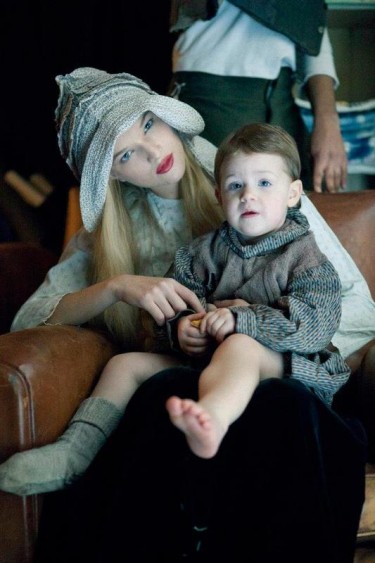
Ceri Vintage
Ceri Vintage, located in the historic district of Florence, Italy, act as a reference for stylists, costume designers and for those that love to wear unique clothing.
Blackyoto was founded in 2013 by Brit born, German based, Jeremy Mcalpine. The forward thinking brand was born out of upcycling iconic military surplus, overdyed at the finest traditional Japanese dyer, Kyoto’s Montsuki Co, with the blackest of black dyes, black oxide. The collection is comprised of workwear and military clothing, including camo coats, Kendo jackets, vintage judo suits and mesh T-shirts. Also known for its vintage women’s lingerie, which is completely reimagined and contemporized when overdyed in deepest black, with items ranging from turn of the century French petticoats, and Bavarian lace trimmed bloomers, to the finest antique silk tulle and glass beaded evening gowns. Items are sourced throughout Europe, from Germany to the Czech Republic. Passionate about the quality of well designed vintage garments, the brand relish in the concept of reintroducing forgotten garments back into use.
Macalpine’s fascination for the dye house’s unique history and cultural significance led to the development of the brands DNA, with everything in the collection dyed the blackest of black by the Arakwawa dyeing factory that was established in 1915. The 2nd generation of the family founded the Kyoto Montsuki Co Ltd. in 1969, where the ‘Junguro’ genuine black dye technique was developed. Although originally used exclusively for the dying of kimono’s the company agreed to take on dyeing modern dress materials using ecological dye compounds in combination with the ‘shinkuro’ oxide finishing. The process is entirely Oeko-Tex certified to Standard 100, and done with a range of natural and plant based materials, each of which lend texture to the final blackness of the dye process. Traditional shibori dye techniques are used to augment the black overdye, on occasion revealing a military stripe otherwise obscured.
The symbolism of the color black, which is viewed as spiritual by the Japanese, combined with the difficulty and complexity of achieving a perfect black, and the upcycling quality European garments, forms the basis of the brands DNA. Blackyoto don’t just upcycle garments, but also trimmings, buttons, and vintage silk, with the dye process itself revitalizing the natural fibers and fabrics. The line is produced every three months, instead of in seasonal collections. Inspired by nationalist Japanese Samurai Sakamoto Ryoma, who was regarded as a traitor by his fellow samurai when he became a sympathizer of the Touguwa shogun responsible for opening up Japan to Western trade. The collection is carried by visionary retailers Dover Street Market, LN-CC, United Arrows and L’Eclaireur in Paris.
Website: www.blackyoto.com